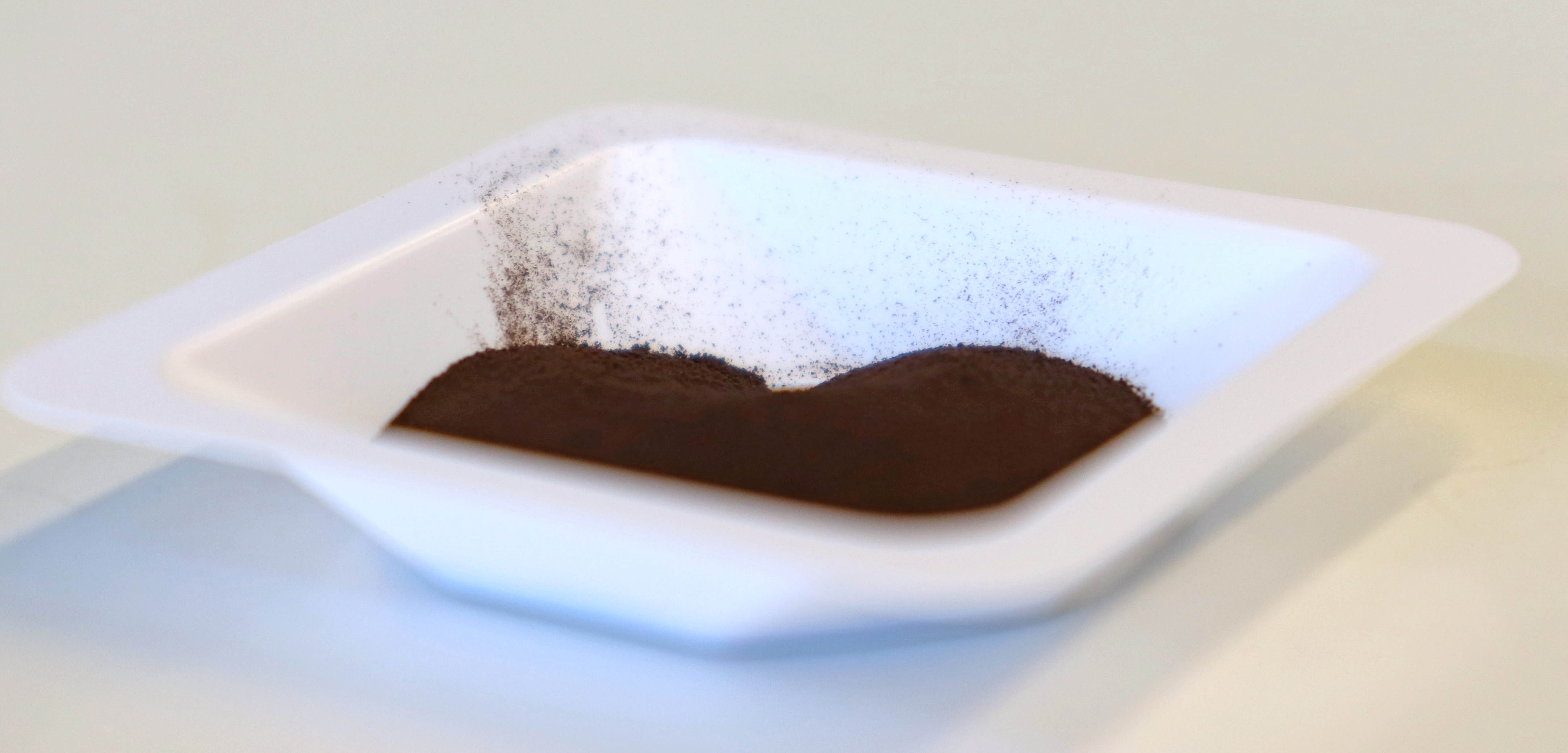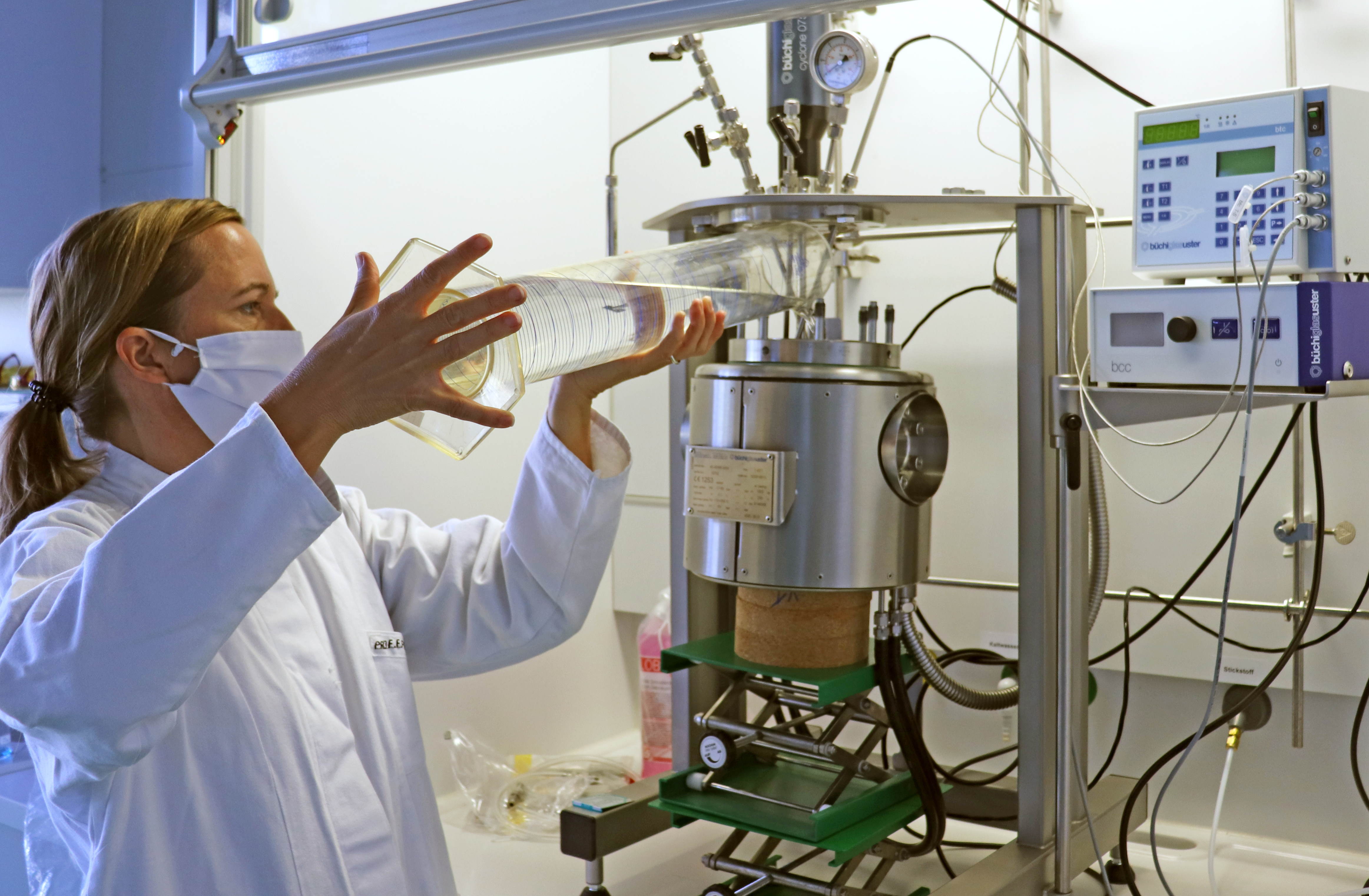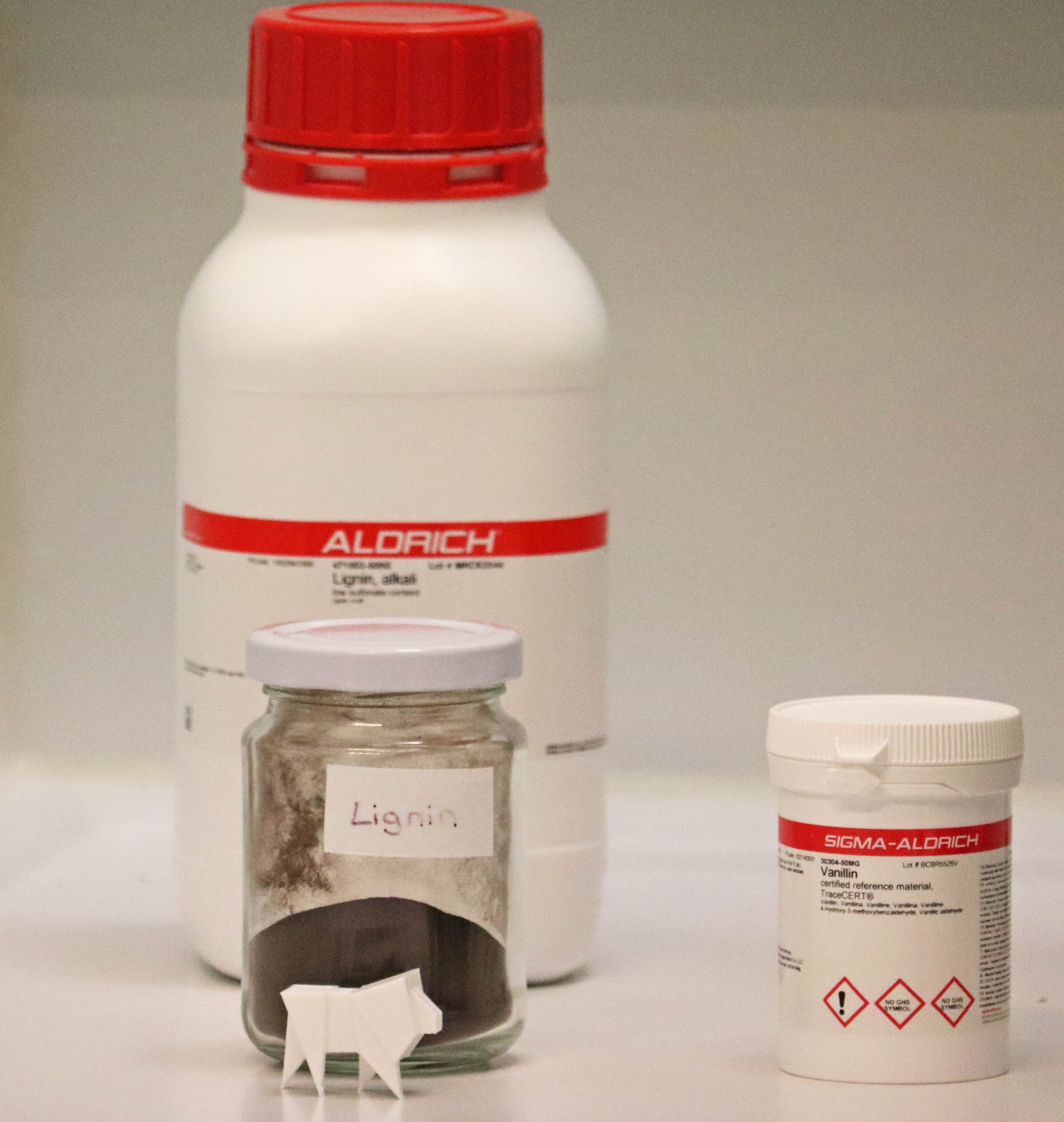Main navigation
Bioeconomic model project: vanillin from process industry residues
Extracting vanillin from lignin dissolved in black liquor and developing it into a process that can be scaled up for industry is a bioeconomic approach that researchers at Biberach University of Applied Sciences and Ulm University are pursuing in a five-year project.
The aim is to extract a value-added product from the aqueous residual material stream of the pulp and paper industry - black liquor - before it is combusted in a recovery boiler. The idea being that, if successful, the predominantly petrochemical synthesis process of vanillin could be replaced by a process based on biogenic raw materials.
Lignin is a wood component that is an undesirable by-product of pulp and paper production. It is therefore evaporated in several stages and finally burned1). However, this is only the very last step in the valorisation of lignin. However, the fact that lignin, a biopolymer, has an interesting cyclic (C6 rings) molecular structure, which is basically suitable for many platform chemicals in the biorefinery concept, speaks in favour of the upstream upcycling of lignin as a promising source of biobased materials.
Diverting black liquor from the residual material stream
Black liquor is a substance-rich, heterogeneous broth containing dissolved lignin, one of the three main constituents of wood. The product derived from lignin, vanillin (4-hydroxy-3-methoxybenzaldehyde), produced naturally or artificially, is a fragrance and a flavouring substance in high global demand in the food, perfume and pharmaceutical industries.2)
"The Biberach approach follows a bioeconomic logic," says project manager Prof. Dr. Heike Frühwirth from Biberach University of Applied Sciences. This is because it replaces petroleum, a fossil raw material source, with wood, a renewable resource. Most vanillin production relies on the climate-damaging variant petroleum, which goes through a multi-stage processing from benzene via guaiacol that produces toxic by-products and waste.3) The advantage of synthetic vanillin production is economic: it is many times cheaper (up to a factor of 100) than natural vanillin, the main aroma component of the pods of Vanilla planifolia from the orchid family.4)
Scarce and expensive: natural vanillin
Natural vanillin is scarce and very expensive. Natural extraction of this flavouring agent, which is in high demand worldwide, covers only a fraction of the estimated global production of around 25,000 metric tonnes per year. Ferulic acid is another natural source of vanillin but it is not economically competitive. It is obtained primarily through the fermentation of rice bran. However, natural vanillin can also be produced biotechnologically from eugenol, for example from clove oil, or curcumin extracted from turmeric.
"The goal of the cooperative project within the InnoSÜD university network is to prepare the manufacturing process so that it can be implemented on a larger, industrial scale," says Frühwirth, a process engineer and spokesperson of the project, which ends in 2022.
Oxidation in pressure reactor
The researchers obtain the biogenic vanillin source black liquor from a regional paper mill. About 300 to 1,000 ml of black liquor is needed for each experiment. Initial trials used the biopolymer from the chemical cabinet. The residual lignin is converted or transferred into a value-added molecule by catalytic oxidation (sodium hydroxide) in a reactor at moderate pressure (10 bar).
The investment costs for a pressure reactor and handling under pressure are offset by the advantages of the partial oxygen pressure and improved reaction conditions for the conversion. According to Frühwirth, the more oxygen introduced under pressure, the more this favours the reaction. She also points out that conversion at moderate pressure is a balancing act, because higher pressures also lead to the increased further reaction of the vanillin. In other words: once the maximum vanillin yield is exceeded, its concentration decreases.
Purification with ionic liquids
Vanillin can be purified in downstream process steps. In cooperation with an Austrian company, the researchers are using ionic liquids for extracting vanillin. They are using solvents of lower toxicity, which have a lower degree of volatility and therefore improve laboratory safety. The actual names of the ionic liquids will only be specified after a planned publication. Meanwhile, the Biberach laboratories are optimising the reaction to achieve the most complete conversion possible with minimal use of catalyst.
"The purification will be done in such a way that the vanillin remains reactive," Frühwirth explains. "The process has to remain under control, so you stop the end of the reaction, remove the reaction mixture, separate it and split the fractions so that you get reaction products that are as pure as possible."
According to Frühwirth, the process of extracting vanillin from black liquor has now been established. The first scaling step to the small laboratory scale (100 ml) has been taken, and the next step to the medium laboratory scale (2 l) will also be successful. The process engineer explains that scaling up is preferably done in small steps to avoid uncertainties.
Oil prices make alternatives unprofitable
Extracting vanillin from lignin is not something new. Initial work was carried out as early as 1936, and Karl Freudenberg reported on a process back in 1940.3) Until the 1990s, 60 percent of vanillin was produced from lignin. However, two developments then reversed the situation: around 90 percent of vanillin now comes from petrochemical production.5) Firstly, low prices for crude oil rendered all previous production processes unprofitable. Secondly, this was made possible by the conversion of many paper and pulp plants to the kraft process still used today. Thanks to this technology for the conversion of wood into wood pulp, not only can the inorganic pulping chemicals (Na2S/NaOH) be recycled, but electricity can also be generated efficiently via recovery boilers.6)
There are many processes for extracting lignin (see Rinaldi et al. 2016 for details), but Frühwirth's researchers are looking at enzymatic processes as a medium-term (biotechnological) option.
References:
1) https://www.abfallbewertung.org/repgen.php?report=ipa&char_id=0303_Zell&lang_id=de&avv=&synon=&kapitel=2>active=no
2) Manuel Breiner, Jan Strugatchi, Siegfried R. Waldvogel: Vanillin aus Lignin. Eine der wichtigsten Aromachemikalien aus dem heimischen Rohstoff Holz, 13th January 2021, Wiley Analytical Science, https://analyticalscience.wiley.com/do/10.1002/was.000400098
3) https://chemistry-europe.onlinelibrary.wiley.com/doi/abs/10.1002/cber.19400730302, quoted from: https://www.lebensmittelmagazin.de/wirtschaft/20200619-vanillin-aus-holzabfaellen-neues-energieeffizientes-verfahren-aus-mainz/
4) http://aromenverband.de/fact-sheets__trashed/woher-kommt-vanillin/
5) Rinaldi, R. , Jastrzebski, R. , Clough, M. T. , Ralph, J. , Kennema, M. , Bruijnincx, P.C. A. , Weckhuysen, B. M.: Wege zur Verwertung von Lignin: Fortschritte in der Biotechnik, der Bioraffination und der Katalyse, in: Angewandte Chemie, 128 (29), p. 8296-8354, 17 June 2016, https://doi.org/10.1002/ange.201510351, p. 8314ff.
6) Ibid., p. 8325f.
7) https://www.bbi.europa.eu/projects/selectiveli, https://www.igb.fraunhofer.de/de/referenzprojekte/LIBERATE.html, https://www.sintef.no/en/latest-news/2018/from-lignin-to-valuable-products/


